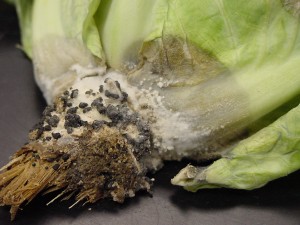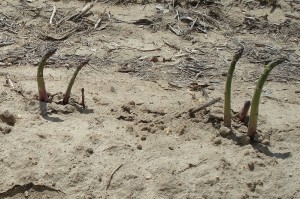White mold, or lettuce drop, caused by Sclerotinia sclerotiorum, has been reported. White mold can cause serious losses in lettuce and other susceptible crops if left uncontrolled.

White mold on lettuce. Notice the white fungal growth and black sclerotia developing on the base of the stem. The sclorotia can survive in the soil for up to 10 years.


